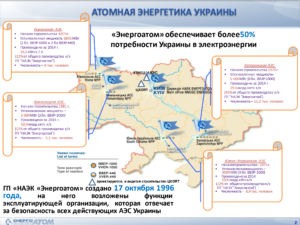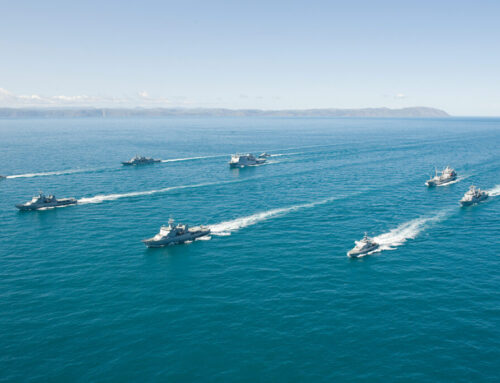PULASKI POLICY PAPER The Russian troops on the Zaporozhye Nuclear Power Plant site. The potential consequences (Jerzy Majcher)
Autor foto: Domena publiczna

The Russian troops on the Zaporozhye Nuclear Power Plant site. The potential consequences?
September 20, 2022
Author: Jerzy Majcher




PULASKI POLICY PAPER The Russian troops on the Zaporozhye Nuclear Power Plant site. The potential consequences (Jerzy Majcher)
Autor foto: Domena publiczna
The Russian troops on the Zaporozhye Nuclear Power Plant site. The potential consequences?
Author: Jerzy Majcher
Published: September 20, 2022
Pulaski Policy Paper no 18, September 20, 2022
There is no doubt that the information about the invasion of Russian troops on the site of the nuclear power plant (NPP) in Zaporizhia provoked an emotional reaction not only in Europe but in the whole world. It led to the intervention of the International Atomic Energy Agency in Vienna in the form of a visit of a group of inspectors representing various specialties, who arrived at the nuclear facility used for civil, not military purposes. The reaction of the institution established for the nuclear supervision is completely justified, because of the fact of the military incursion into the nuclear facility. Therefore the presence of people there who do not know the safety procedures and violate the rules of limited access to nuclear reactors and critical infrastructure accompanying the NPP operation, is a significant violation of safety rules. Already in the first days of the visit, dangerous traces of fire from heavy weapons, power units and some accompanying facilities at this nuclear power plant were revealed. Even with the presence of an IAEA delegation, artillery fire, most likely aimed at panic-inducing, was recorded. The Russian army indicated that the recorded artillery attack allegedly came from an area controlled by Ukrainian troops. It is obvious that in the chaos of war, provocations of this kind easily arise. The problem, however is that such military operations on the premises of the NPP or in its vicinity may lead to damage, which has an impact on the safety of the power plant operation. Already in the first public announcement, IAEA specialists condemned such actions and called on the aggressor’s troops to stop them. There is no doubt that the war in Ukraine, caused by an attack by the troops of the Russian Federation supported by Belarus, is a war of two civilizations.The civilization of democratic countries against the civilization of autocratically managed countries with an ideology originating in communism, in which the principles of humanism have been extremely distorted.
What is the position of NPP Zaporozhye in Ukraine’s electricity supply to that country?
Ukraine is one of the world leaders in the use of nuclear energy in electricity generation. Nuclear energy covers more than 50% of the country’s electricity needs. On the other hand, the Zaporozhye NPP, as the largest power plant with installed capacity, only slightly exceeds the level of 3,000 MWe, and the energy generated by it supplied over 20% of industrial and municipal needs. The fact that the armed forces of aggressors cut off electricity supplies to one in five consumers is a serious blow to the Ukrainian economy and that was Russia’s strategic goal. Cause heavy losses to Ukraine’s economy, regardless of Europe’s nuclear safety.
Such a way of waging war by irresponsible and incompetent military men was and is dangerous not only for both sides of the war conflict, but it could have caused the Chernobyl syndrome, that is, it could cause a risk of radiation contamination of a large part of Europe – including the territory of the aggressors. As history shows, the human factor has always been neglected and of little importance in the Russian military doctrine, which is radically different than in the culture of the Western World.
The nuclear energy sector in Ukraine after the collapse of the USSR, where the NPPs built there were used in the period of the Soviet economy, has undergone a long process of reconstruction and adaptation of nuclear facilities to international standards since gaining independence. Ukraine has completed the process of modernization and adaptation of the nuclear power plants existing on its territory to the standards in force in the civilized world, incurring enormous expenditure on investments for years, mainly dedicated to meeting the safety conditions of NPP operation.
All used NPPs in Ukraine have been modernized and have passed the tests (“stress tests”) required by the IAEA before granting a concession for operating nuclear power plants, and the nuclear power plants in Ukraine, resulting from the experience after the events caused by the earthquake and tsunami at the Fukushima NPP, were modernized in peaceful conditions and are safe and managed by competent crews, trained according to IAEA standards. Similarly, the spent fuel storage and utilization processes were modernized according to a safe technology developed by Holtec International from the USA. The graphic below, prepared for the 2018 conference, presents the situation and localisation of nuclear power plants in Ukraine, with a description of their type of reactors and installed capacity.

Source: A.A Ajsin-President of EnergoAtom Ukraine. Conference “Start of modernization processes and economic growth of Ukraine’s nuclear power plants”. Kyiv -2018
The presentation showed that the Zaporozhye Nuclear Power Plant consists of three VVER-1000 reactors with a total installed capacity of 3000 MWe, generating over 22% of electricity in 2014 and employing about 7,000 employees – it is one of the largest industrial facilities in Ukraine. Energy from the Zaporozhye NPP was sent to the Ukrainian power system through the highest voltage 750 kV lines, which were also modernized and equipped with modern security automation protecting both the grid and the power plant itself from disruptions in their operation. Some of these networks were a remnant of the USSR system and led to the territory of the Russian Federation, which had certain consequences in the event of the invasion of Russian troops.
After the military control of the Zaporozhye power plant, the aggressors, using the acquired infrastructure, switched in the station which evacuated power from the plant, and by opening the switches connecting the power supply network to Ukrainian consumers, they deprived them of their energy. However, using the possibility of local control of the circuit breakers, they supplied the power line in Russia.
Such a maneuver was certainly carried out with the use of the terrorized crew and performed under conditions of forcing them to behave in a manner inconsistent with safety procedures. The very fact of running the network and managing the transformer station, without the arrangements with the Transmission Network Operator of Ukraine, was a serious disruption to work due to the possibility of overloading the power plant with power not resulting from the balancing of the network and the transmission capacity of the main line in Russia. Such a case could lead to the activation of protection automatics and cause a definitive disconnection of the power plant and the launch of emergency cooling of reactors by active systems of protection against exceeding the permissible temperatures resulting from the so-called Post-decay heat (from fission and decay of radioactive fission products). Apart from the undoubted stress of the crew working under duress imposed by aggressors, who could make mistakes in maneuvering the switch positions, without coordination with the Transmission Network Operator’s disposition center – such action was a threat to the operation of a nuclear power plant and put it into an emergency. The described event could have been potentially dangerous, but it also indicated the looting of electricity in Russia and caused economic losses for Ukraine, deprived of about 20% of electricity. In any case of military operations in the territory through which the overhead lines pass energy from the Zaporoshye NPP, it will result in an emergency shutdown of the units and the shutdown of the reactors’ operation. Potentially, it will always be dangerous to interrupt the operation of the line supplying the own needs of the power plant, because it must start up the active safety defense systems of the unit operation. Such uncoordinated actions by aggressors should be influenced by the event from a few months ago, consisting in a hacker attack launched from Russia on the distribution network of the Kiev area, when electricity consumers were left without power for many hours.
The above mentioned event requires even greater vigilance and the need to supervise and separate IT systems that supervise the operation of the transmission network, which is important for the European power system ENTSO-E, to which the Ukrainian transmission network was connected a few months ago. Thus, Ukraine, not yet a member of the EU, is already a real participant in the operation of the European transmission network in the field of energy, and any possible serious disruption resulting from military operations may affect the stability of the entire ENTSO-E system.
Can military operations on the premises of the Zaporozhye NPP be a threat to nuclear safety?
There is no doubt that the most dangerous are hostilities, which are far from the safety procedures that should be followed in the operation of high-power nuclear reactors. As can be seen from the IAEA inspection reports at the Zaporozhye power plant, fire from small arms and even heavy weapon did not cause critical damage to the operation of the reactors.
There is no doubt that the most dangerous are hostilities, which are far from the safety procedures that should be followed in the operation of high-power nuclear reactors. The structure of the reactor mantle could be unsealed after it was damaged by a large air bomb or a large-caliber rocket precisely aimed at the reactor island at the Zaporozhye NPP. The reinforced concrete structure of the reactor island is not easy to cross, which does not mean that such an event cannot be completely possible. If, however, as a result of an irresponsible attack by aggressors on the reactor part, a leak of steam occurred from the boiling part of the reactor, the potential radiation contamination would reach both the attackers and the attacked. The amount of steam from the primary cycle is several hundred tons of steam produced per hour. Such a “weapon” would work both ways, without the possibility of counteracting its effects. Such an event could have, due to the strength and direction of winds, the range of possible radiation contamination, an effect wider than just locally on the site of the power plant. As mentioned earlier, in such a case, the reactor operation would be turned off automatically, and if there was any damage to the active cooling systems, then passive systems would be activated, capable of cooling the reactor for up to 72 hours. The reactor would then be flooded with water from the emergency tanks as dictated by the stress test procedures. Emergency work procedures were introduced after the experience of failures at the Fukushima power plant. The potential failure described here, resulting from irresponsible military actions of the aggressor, could have rather limited and local radiation effects as a result of the operation of preventive systems.
A similar approach should be given to a possible attack on spent fuel landfills on the premises of the Zaporozhye power plant. In this case, even a leak of cooling water from the tanks cooling down concrete containers with used fuel will not cause global threats, and at most local and relatively easy to control threats, without the need to evacuate the population from the areas adjacent to the power plant.
Other safety risks resulting from irresponsible military actions at the Zaporozhye power plant are those that can damage high-temperature and high-pressure secondary steam circuits. These are steam generators, live steam pipelines, steam valves and a steam turbine – such damage could potentially be a threat to the working crew serving the turbine part of the power plant. Of course, the protection automatics then switched off the reactor part from operation in emergency mode. Potential hazard would only concern the working crew present in this space of steam leakage.
Military operations can potentially also cover the generator part in the machinery hall, which could potentially pose a threat to damage the tightness of the hydrogen-cooled generator. Since hydrogen in contact with air has a flash point in the range of 17oC to 70oC, this could, to a limited extent, lead to a local explosion and fire. This type of threat would not be global in nature and could normally be handled by the local fire department.
Other threats to military operations at the Zaporozhye NPP may relate to attacks on the systems of liquid fuel supply tanks (diesel oil) for cooling pump engines constituting a backup system working for cooling during a system failure with electric pumps. A local fire would then occur, but usually this part is separated from the reactor part by barrier walls. A fire of fuel from emergency cooling tanks should usually be locatable by the local fire brigade.
Another place of potential threat to the Zaporozhye NPP may be the power evacuation system from the power plant through the transformer station. Usually single-phase transformers are cooled with transformer oil. If such a transformer is fired and the ladle is unsealed, oil may leak, which may ignite at high temperature. Then, a local fire of the oil accumulated in the tank buried in the ground under the transformer tank could occur. This type of damage should be treated as potentially local contamination with no global coverage. Transformer fires are usually dealt with by the power plant fire department.
Conclusions and recommendations
1. Concluding the above considerations about the potential threats to the operation of the Zaporozhye Nuclear Power Plant, it should be emphasized that the facility itself meets all nuclear safety criteria imposed by the IAEA on licensed power plants and does not carry global threats to the environment without exceeding the conditions of safe operation.
2. Separation of Zaporizhzhya NPP from the lines carrying electricity to the grid will always result in shutting down the reactors and activation of at least one of the emergency post-shutdown heat cooling systems.
3. The IAEA and all civilized countries in the world should force Russia to withdraw its troops from the Zaporoża nuclear power plant and create a demilitarized zone around it under the control of UN troops.
4. We are not able to predict, what level of destruction may be caused by military operations conducted on the site of this nuclear power plant by the troops of the Russian Federation, because it is a nuclear facility dedicated to the peaceful use of nuclear energy in civilian rather than military facilities. The presence of the army in these facilities will always be a threat to people and the environment and it should be absolutely eliminated by all possibilities and means.
Author: Jerzy Majcher Ph.D., independent energy and environmental consultant.
The Paper was prepared in cooperation with International Centre for Ukrainian Victory.





